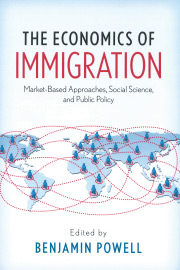The unaccompanied children arriving on our Southwest border are not causing an immigration crisis for Americans. Politicians, as usual, are sensationalizing the facts for their own partisan agendas. More immigrant children are arriving but the crisis is for them, not the native born in the United States.
The number of unaccompanied children under 12 caught crossing the border illegally has surged by 117 percent this fiscal year. That sounds like a big increase but it only amounts to an increase of around 4,000 children. If we count the absolute number of children, including teenagers, detained, they are still less than 47,000 in total.
Nebraska GOP Senate candidate Ben Sasse lacks perspective when he complains, “How many more kids are going to be put on top of trains? Half-a-million? A million? Five million?” before the President sends a strong message to these children that they cannot migrate here.
Prior to our recent recession, there were around a million and a half annual attempts to cross the Southwest border illegally and roughly a third were successful. In recent years, net migration from Mexico has turned negative. The migration turn-around is a product of the improved performance of the Mexican economy relative to the U.S economy and the fall in Mexican fertility rates. Neither of these trends is likely to reverse in the near future.
With the wave of illegal Mexican migration largely behind us, an increase of a little more than 8,000 unaccompanied children, mostly from Honduras, Guatemala and El Salvador, hardly amounts to a crisis. That number, and the children from these countries that are encouraged to migrate in the future, could easily be absorbed without significant ramifications for the native born population of the United States.
A key difference, compared to the illegal Mexican migration of prior decades, is that these are all children rather than adult workers. That makes it more likely that these kids are net tax consumers when they first arrive. President Obama has already requested $3.7 billion just to deal with the temporary problems related to these children. If they were allowed to stay their education and health care would cost tax payers many billions more.
But when considering the fiscal impact of any immigrant, we cannot just look at a snapshot in time but instead must consider the taxes they will pay and government services that they consume over their lifetimes. Serious scholarship on the fiscal impact of immigrants accounts for this lifecycle of taxes and services and any additional dynamic effects immigrants have on taxes generated in other parts of the economy.
Methodologies and assumptions vary from study to study but most serious scholarship finds that immigrants have little net fiscal impact over their lifetime. Some studies find negative impacts, some find positive impacts, but they are all small and clustered around zero. That means that, although there are some upfront tax costs of these migrant children, they won’t impoverish taxpayers over the long run.
All of this is not to say that there is not a crisis. It is just not an immigration crisis for Americans. The crisis confronts these children. They have fled poverty and violence in their home countries. The United States government’s war on drugs is one of the main causes of the violence that they flee.
In order to solve their crisis the children should be given refugee status and allowed to stay and the United States government should end its unwinnable war on drugs. That would help these children now. It would lower the violence and corruption in their home countries so that fewer families would feel the need to send their children North in the future.
As an upshot, we in the United States would be made better off too. The immigrant children would provide modest net economic gains to us once they are adults and drug legalization would eliminate many of the evils associated with prohibition while making us a freer and more prosperous society.











